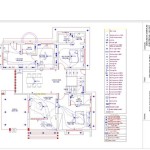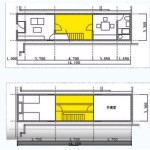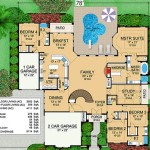Reading House Plans : A Comprehensive Guide
Introduction
: Reading house plans is a crucial skill for anyone involved in the construction or renovation of a home. Whether you're a homeowner, contractor, or architect, the ability to decipher and understand these blueprints is essential for ensuring a successful project. In this comprehensive guide, we'll delve into the intricacies of reading house plans, providing you with the knowledge and tools to navigate these technical documents with confidence.1. Understanding the Basics of House Plans
: Before diving into the specifics, it's important to grasp the fundamental components of house plans. These typically include:- Foundation Plan
: This blueprint illustrates the foundation's design, including its shape, dimensions, and materials.- Floor Plans
: Multiple floor plans represent each level of the house, showing the layout of rooms, walls, doors, and windows.- Exterior Elevations
: These drawings depict the various sides of the house, showcasing its exterior appearance and design elements.- Roof Plan
: This blueprint details the roof's structure, including its shape, slope, and any unique features.- Mechanical and Electrical Plans
: These plans provide information about the home's electrical, plumbing, HVAC, and other mechanical systems.2. Interpreting Symbols and Abbreviations
: House plans are filled with a multitude of symbols and abbreviations that convey specific information. Familiarizing yourself with these symbols is crucial for understanding the intricacies of the plans. Common symbols include representations for walls, doors, windows, fixtures, and electrical outlets. Abbreviations may stand for terms such as "BR" (bedroom), "BA" (bathroom), and "KIT" (kitchen).3. Scales and Measurement
: House plans are typically drawn to scale, allowing you to determine the actual dimensions of the home and its components. The scale is usually indicated on the plan itself, and it's essential to pay close attention to it to ensure accurate measurements. Additionally, dimensions may be specified in feet, inches, or metric units, so it's important to be familiar with the measurement system used in the plans.4. Analyzing the Floor Plans
: Floor plans are perhaps the most critical part of house plans, as they provide a detailed layout of the home's interior. Here are some key aspects to focus on:- Room Dimensions
: Pay attention to the dimensions of each room, including its length, width, and height. This information will help you determine the size and functionality of the space.- Room Relationships
: Study how the rooms connect and flow into each other. Consider the proximity of bedrooms to bathrooms, the connection between the kitchen and dining area, and the accessibility of outdoor spaces.- Wall Types
: Walls can be represented by different line types. Solid lines indicate load-bearing walls that support the structure, while dashed lines represent non-load-bearing walls that can be modified or removed.- Door and Window Locations
: The location and type of doors and windows play a crucial role in the home's layout, ventilation, and natural light.5. Understanding Elevations and Roof Plans
: Elevations and roof plans provide valuable insights into the home's exterior appearance and structural details. Here's what to look for:- Exterior Finishes
: Elevations showcase the exterior materials and finishes, such as siding, brick, or stucco. They also indicate the placement of windows, doors, and other architectural elements.- Roof Structure
: Roof plans illustrate the type of roof, its pitch or slope, and any unique features like dormers or skylights.6. Interpreting Mechanical and Electrical Plans
: Mechanical and electrical plans provide essential information about the home's infrastructure. These plans may include:- Electrical Layout
: These plans show the location of outlets, switches, light fixtures, and electrical panels. They also indicate the wiring routes and circuits.- Plumbing Layout
: Plumbing plans display the location of pipes, drains, fixtures, and water heaters. They help determine the location of bathrooms, kitchens, and laundry areas.- HVAC Layout
: HVAC plans illustrate the placement of heating, ventilation, and air conditioning systems, including ducts, vents, and thermostats.7. Seeking Professional Guidance
: While this guide provides a comprehensive overview of reading house plans, it's important to note that this skill requires practice and expertise. If you're unsure about any aspect of the plans or if you're planning a complex construction project, it's always advisable to consult with a qualified architect or contractor who can provide professional guidance and support.Conclusion
: Reading house plans is a valuable skill that enables you to understand the design, layout, and construction details of a home. By familiarizing yourself with the symbols, scales, and various components of house plans, you can effectively communicate with contractors, architects, and other professionals involved in the building process. Whether you're a homeowner embarking on a renovation project or a professional in the construction industry, mastering the art of reading house plans is essential for ensuring a successful and satisfactory outcome.
How To Read A Floor Plan With Dimensions Houseplans Blog Com

How To Read House Plans Floor Building In 10 Minutes Archid

How To Read A Floor Plan With Dimensions Houseplans Blog Com

How To Read House Plans The Construction Set

How To Read House Plans Floor Building In 10 Minutes Archid

How To Read A Floor Plan With Dimensions Houseplans Blog Com

How To Read Diffe Floor Plans

How To Read Blueprints

How To Read House Plans Elevations

How To Read House Plans Floor Building In 10 Minutes Archid








